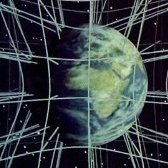Leaderboard
Popular Content
Showing content with the highest reputation on 04/08/20 in all areas
-
You're so negative! Why can't you say, "It's amazing how consistent you've been in defending your perspective"? Why can't you say it like that? I've been right a lot. You ought to be ashamed of yourself.2 points
-
The paper looks like a rewritten version of this one from the same author(s) https://www.aanda.org/articles/aa/pdf/2018/03/aa31222-17.pdf2 points
-
Would be easier for me to understand if you stopped talking in riddle and explained what you mean?2 points
-
1 point
-
But you think that about everything. I assume a conversation with you must be like: Me: Good morning! You: Oh no! Does that mean we are all going to die? Me: No. I was just saying hello. You: Oh but it sounded like you were saying the world was about to end. Me: ... They say that their measurements are consistent with previous measurements. (That is science-speak for "almost the same as") How on Earth can a small difference in the expansion rate in different directions (or even a large difference) be a bad outcome for us? It's not like anything has changed, apart from our understanding.1 point
-
On the below blog an explanation in more easy-to-grasp language. By the author. https://chandra.harvard.edu/blog/node/7541 point
-
Not a big deal. I would expect anisotropy out to a certain distance, as expansion is mitigated by gravity and flows ( of galactic cluster masses ) on smaller scales. True isotropy will only become apparent at extremely large distances, and may only approach it at the limit. From the paper... "If no biases are identified as the reason behind the anisotropies we observe and other probes seem to consistently agree, then the explanation might indeed be of cosmological origin. Such examples would be an anisotropic dark energy nature leading to different expansion rates for different directions in the late Universe, coherent bulk flow motions up to certain cosmic scales affecting the cosmological redshift measurements etc." Good to see that you CAN understand scientific literature, Bmpbmp75. Maybe now you'll stop 'foolin' and become a productive member of the forum ?1 point
-
Forgive me if I'm wrong about this, but in my experience, people who've studied physics and maths formally and intensively don't ask this question. They all seem to understand at a fundamental level how science describes the natural world. The folks who ask this question are the ones who haven't studied as rigorously, and I'm skeptical of their motives. If everything we know is wrong (black is white, up is down, and short is long^), then they were right to have avoided studying it in school. It seems like calling mainstream knowledge into question becomes a justification for skipping school. I could be wrong, but this is my impression after a number of years of discussion. * Thanks, Weird Al!1 point
-
It occurs when an attempt is made to read or write the page. If the page is not in memory, then it will have to be fetched before the read or write can complete. The algorithm wants to keep track of which pages have been modified separately from those that have just been referenced / read. (I'm sure there is a good reason for that, presumably analysis shows that pages which are written to are more likely to be used again, or something). So it has to keep track of when pages are modified. The easy way to do that (with the performance overhead of detecting every single write) is to initially mark the page as READ ONLY. Then when the software attempts to write to it, that will cause a page fault (attempting to write to read-only memory). At the point you can set the M flag to indicate that the page has been modified (because that is used later in the algorithm) and set the READ/WRITE flag so any further writes to that page will not cause a page fault (ie. won't slow the processor down).1 point
-
One major point is that it doesn't matter how the OP believes concerning the speed of light. experimental evidence trumps any argument the OP can present1 point
-
I'd prefer if we could keep the medical side of this discussion and whether or not individual treatment options are effective in that other thread, but here's one summary for convenience: https://www.sciencealert.com/small-trial-found-antimalarial-is-not-effective-for-treating-coronavirus1 point
-
1 point
-
The magnification of a simple telescope/microscope is the ratio of the focal lengths of the objective lens and the eyepiece. If you have a more complicated system, you are changing the effective focal length when you turn the knob. You can change the magnification by changing the eyepiece1 point
-
This directly violates a number of basic principles in physics, most notably: 1. Photons are massless, so they cannot propagate at anything other than exactly c. 2. Under the laws of relativity, light traces out null geodesics in spacetime. This is possible only if their propagation velocity is exactly c 3. The propagation of light is described by Maxwell’s equations - these equations are generally covariant in nature, they take the same form regardless of what the state of relative motion is, or where (in relation to gravitational sources) the experiment takes place. Therefore the propagation velocity cannot depend on the observer. 4. The numerical value of c is a direct function of vacuum permittivity and permeability; both of these are fundamental constants, and do not vary with the state of motion of the observer. Thus the value of c cannot vary either. In a small enough local region, your proposal furthermore amounts to a violation of Lorentz invariance; all available experimental data indicate that no such violations exist.1 point
-
The formula would be be too complex to explain to the average layman lmao1 point
-
Your welcome. I gave you a +1 as your showing more interest in learning. Keep it up1 point
-
it’s amazing how we can calculate this to 13.8 billions with a margin of 10-20 millions of years. 13.7 to 13.9 . Thanks so much for helping me understand When you said Correct vary the value of the , I assume you meant I was correct. Lol it’s amazing how we can calculate this to 13.8 billions with a margin of 10-20 millions of years. 13.7 to 13.9 . Thanks so much for helping me understand1 point
-
On February 4th, Jiao Yahui, deputy director of the Medical and Health Care Administration Bureau of the Chinese Health and Medical Commission, said that as of 24:00 on February 3rd, the nationwide case fatality rate was 2.1%. The fatality rate of confirmed cases in Hubei Province is 3.1%, and the fatality rate of confirmed cases in Wuhan is 4.9%. If Hubei is excluded, the fatality rate in other provinces is 0.16%. According to Michael Ryan, WHO's executive director of health emergencies, the 2% case fatality rate remains a tricky case fatality rate compared to the case fatality rate of seasonal flu or other diseases. A retrospective study published January 29 in The Lancet showed that COVID-19 infection is more likely to affect older men with comorbidities, and that older age, obesity and comorbidities may be associated with increased mortality. Although no conclusion can be reached on the mortality rate, the academic community generally believes that the mortality rate of this virus is much lower than the other two coronaviruses: MERS with a mortality rate of one third and SARS with a mortality rate of about one tenth. From a clinical perspective, MERS and SARS appear to be more damaging to lung tissue. More FAQs1 point
-
Not sure whether you are aware of this info guys, but he today threatened the Indian government for banning the export of this drug: https://www.bbc.com/news/world-asia-india-521806601 point
-
True. Let's name your object "O". True. In my opinion both are right. An object O pushed by a force in Unity3D seems to behave as Swansont states, it will gain momentum and behave pretty realistic within the limits of the physical model. There is zero total momentum when simulation starts and a non-zero total momentum at some time later; total momentum in the "universe" in the Unity3D model is not, and not designed to be, conserved. OP seems to argue that this lack of momentum conservation tells us something about physics outside the 3D software. Dagl1's suggestion is to model a complete little "universe" where there is zero momentum at time=0 and zero total momentum at any later time due to correctly modelled forces and counter forces. Sorry if this confuses the discussion further. But the question seems to directly address possible misunderstandings of OP regarding the modelling in the physics engine.1 point
-
1 point
-
Someone should tell Trump: https://twitter.com/i/status/12465562193110794251 point
-
And I should add that it is monumentally unlikely that everything we know is wrong. Simply because there is so much consistent evidence of different sorts for all the models we have now. You couldn't overturn one without everything else also being wrong. There are probably many things that are inaccurate or incomplete. There may be a few things which are completely wrong. But that is vanishingly rare in science. I can only think of a couple of good examples in the history of science.1 point
-
Suggesting that Pres Trump profits from these the pharmaceutical is facebookian hateful bias. Perhaps you should invest a tiny amount of time to consider the facts. Chlroquine has been off patent for decades and its two primary large company suppliers - Teva and Bayer -_ are both publically-held companies. Both have donated millions of doses. Typical hateful bias. Suggest you folks stick to the ill-informed technical and policy discussions.1 point
-
Realistic assessment or not it's just a guess with a lack of evidence. Why build a case against Trump with a house of cards, when there's plenty of bricks and mortar around?1 point
-
The answer is right there on TV re-runs of The Big Bang Theory. Use a quantum liquid for the gyroscopic mass. It would be self-balancing and have minimal friction. I'll leave it up to someone else to work through the 'trivial' implementation issues ( )1 point
-
The most accurate gyroscopes ever made [I presume] were those on GP-B. https://einstein.stanford.edu/TECH/technology1.html#gyros World's Most Perfect Gyroscopes: To measure the minuscule angles predicted by Einstein’s theory, the GP-B team needed to build a near-perfect gyroscope—one whose spin axis would not drift away from its starting point by more than one hundred-billionth of a degree each hour that it was spinning. By comparison, the spin-axis drift in the most sophisticated Earth-based gyroscopes, found in high-tech aircraft and nuclear submarines, is seven orders of magnitude (more than ten million times) greater than GP-B could allow. Gyro Rotors Three physical characteristics of any gyroscope can cause its spin axis to drift, independently of the general relativity precession predicted by Einstein’s theory: An imbalance in mass or density distribution inside the gyroscope An uneven, asymmetrical surface on the outside of the gyroscope Friction between the bearings and axle of the gyroscope. This meant that a GP-B gyroscope rotor had to be perfectly balanced and homogenous inside, had to be free from any bearings or supports, and had to operate in a vacuum of only a few molecules. After years of work and the invention of new technologies and processes for polishing, measuring sphericity, and coating, the result was a homogenous 1.5-inch sphere of pure fused quartz, polished to within a few atomic layers of perfectly smooth. In fact, the GP-B gyro rotors are now listed in the Guinness Database of World Records as being the roundest objects ever manufactured, topped in sphericity only by neutron stars. more at link.....1 point
-
1 point
-
Not sure about "anchor", intuitive answer is "no" but clarification might be needed. By "anchor" you mean can gyros be used to make it harder to move something, like an anchor prevents a shop from drifting away? Gyros are harder to rotate but not harder to move. Yes. One example is the Kepler spacecraft. What makes this interesting is that two of it's four gyros broke down and required a lot of investigations how to adjust observations according to that fact. That means that there is lots of documentation about the performance of the gyros, their issues and various attempts at workarounds. AFIK Kepler had four gyros (wikipedia/Reaction_wheel) and failure of two severely affected, but did not put an end to the mission to hunt for exo-planets. @Dave Wave here are some references that may be interesting from an engineering point of view: https://www.nasa.gov/feature/ames/kepler/nasa-ends-attempts-to-fully-recover-kepler-spacecraft-potential-new-missions-considered https://www.nasa.gov/content/kepler-mission-manager-update-preparing-for-recovery https://www.nasa.gov/content/ames/kepler-mission-manager-update-k2-has-been-approved A space based device to detect gravitational waves needs stability and gyroscopes are one option. But could the gyroscopes them self be used for more than stability? Interesting question that I do not have an opinion* at the moment. I think the question could be phrased like: does rotating gyros, when affected by a passing gravitational wave, add any value when trying to detect the wave? Does general relativity, when applied to rotating mass, make any predictions that would favour detections? I have no answer at this time but I find the question interesting. Other members will probably have answers. *) If I had to make an educated guess I would say "no, gyros does not add value regarding the detection except for stability". But that opinion has about zero scientific value.1 point
-
Yes, you’re on the right track. Gyroscopes are used to provide stability for satellites and control their orientation https://en.wikipedia.org/wiki/Control_moment_gyroscope1 point
-
0 points
-
0 points
-
Did an external force move the center of mass? Did the little machine eject mass to propel itself?0 points
-
Suggest you spare us your hateful bias.-1 points
-
-1 points
-
-1 points
-
Hello! I created a topic in the main section, but it was closed. I probably did not create it where I needed to. Create here. I'm interested in what is the simplest virus? So that its genome is as small as possible in size. Or, the simplest viroid? I want to try to create a virus at home. I don’t understand why you are losing my reputation. And what is evil in that I want to repeat everyday laboratory experience? They also react negatively to Russian forums. I thought at least there are people here .. Maybe it's because I don’t know English? Forgot to say, I use Google translator.-1 points
-
No, diseases, calamities and catastrofes ever existed in the planet even before the existence of humans.-1 points
-
-1 points
-
-1 points
-
I got the 10% from the estimate you gave before I am sorry. I think they said the earliest the universe can end is 2.8 billion years. Looking at 10% less I am sure I won’t be alive by then thanks for your help-1 points
-
We all hear the whoosh, if we're honest; the whooping is a different question.-2 points
-
Understand, that you can't understand, why you don't understand...-2 points
-
Good grief - as ill informed on science and policy as many of you are - you sure are experts re. your bias.-3 points
-
If I could I would... The fact is, I can't, unless you have learned/experienced what I have...-5 points

















